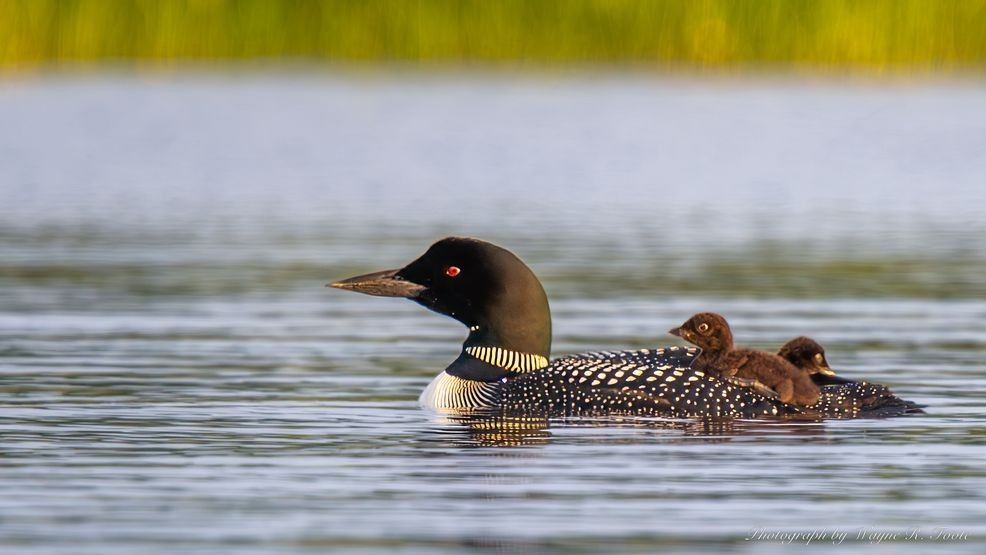Mainers love their birds and so this summer we are telling you about a different bird each week with the help of Maine Audubon.
In this Bird of the Week segment, Maine Audubon’s Ethan Hobbs, a loon restoration technician, helps us get to know the common loon ahead of this year’s “loon count.”
Common loons are common year-round to Mainers but not really to the rest of the U.S., aside from Alaska. The common loon breeds in Maine and last year during the annual loon count, Hobbs said volunteers managed to count 3,000 nesting adults.
The bird is unique to see with its distinctive red eyes and a speckled black and white back.
The loon is built to dive into Maine lakes, with its legs set to the back of its body and its bones completely dense (unlike ducks and most other birds with hollow bones).
Since 1983, from 7 to 7:30 a.m. of the third Saturday of July each year, hundreds of volunteers wake up early to venture onto lakes and ponds across Southern Maine to count loons as part of Maine Audubon’s Annual Loon Count.
This year the loon count will be held on July 19. For more information on how you can participate, head to Maine Audubon’s page here.
The Maine Audubon says the observations recorded by community scientist volunteers provide a “snapshot” of the state’s loon population on lakes throughout Maine at the same time each year. From these data, the Maine Audubon says they are able to estimate the population and assess trends over time.
Hobbs says the loon population has more than doubled since they started counting loons in Southern Maine in the 1980s, removing them from the “threatened” species level in Maine. The same can not be said in New Hampshire.
Loons are not built to travel very far on land, so in recent years, Maine Audubon has deployed floating platforms to help make it convenient for the loons to nest.
If you hear the eerie, beautiful call on one of the thousands of lakes in Maine, the Maine Audubon says the loon is checking to see who else is on the lake.
Coming up next week for Bird of the Week, we’re discussing the American Redstart. If you have photos/video of this bird, submit them here to be featured in our noon broadcast on Thursday.

